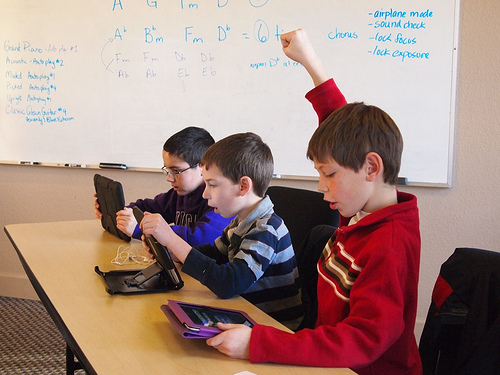By Matt Levinson
As schools get ready to deploy iPads this year, each one is scrambling to figure out how to develop an efficient and effective system that works. With no standardized system or uniform roadmap to follow, at the moment, it's up to individual schools to reach out through their networks to find information about best practices and smooth, streamlined service.
Without professional development and a set plan in place, educators in individual classes might be stumped by how to set up iPads for different uses. But once a system is in place, educators will intuitively be able to move on with the business of guiding student learning.
To that end, here are some ideas about how to put a system in place for iPad use in classrooms:
- Establish clearly written Frequently Asked Questions a sensible Responsible Use Policy and a white paper that explains the rationale behind the decision to move to iPads, but also be flexible and nimble with policy as iPads and the best uses for them continue to evolve.
- Include the responsible use policy or acceptable use policy as a PDF in the iBooks app on the iPad so students and teachers can readily access.
- Provide students with photos of proper care and post these photos around key areas of campus as reminders (with a short checklist on essential care).
- Create short video tutorials on how to use different apps.
- Develop a few surveys throughout the year to gather feedback to make mid-course corrections.
- Take photos of classroom set up, with projectors and audio, and post these photos in every classroom, with a short cheat sheet of directions. Create a job in each classroom where students take ownership of the process of ensuring that all systems are working. This will minimize loss of instructional time spent on malfunctioning wiring or connectivity.
- Share best practices and successes with short videos and student presentations with parents, and enlist students as ambassadors to teach adults how to use iPads. This can happen at a parent education event or another similar event.
- Track paper and waste reduction. The shift to iPads makes the paperless classroom a possibility. Have each class monitor their use of paper and printing and set targets for each class, grade level and the entire school.
- Track app usage to find out which apps are most used and most effective.
- Have teachers share best practices at staff meetings. Those who take the lead can help their colleagues figure out how to use apps effectively to deepen student learning. These trainings can occur at staff meetings or in smaller groups at department meetings and should be a regular part of the learning cycle for teachers, who then teach their students.
Matt Levinson is the Head of the Upper Division at Marin Country Day School in Corte Madera, Calif. and the author of From Fear to Facebook: One School’s Journey.


